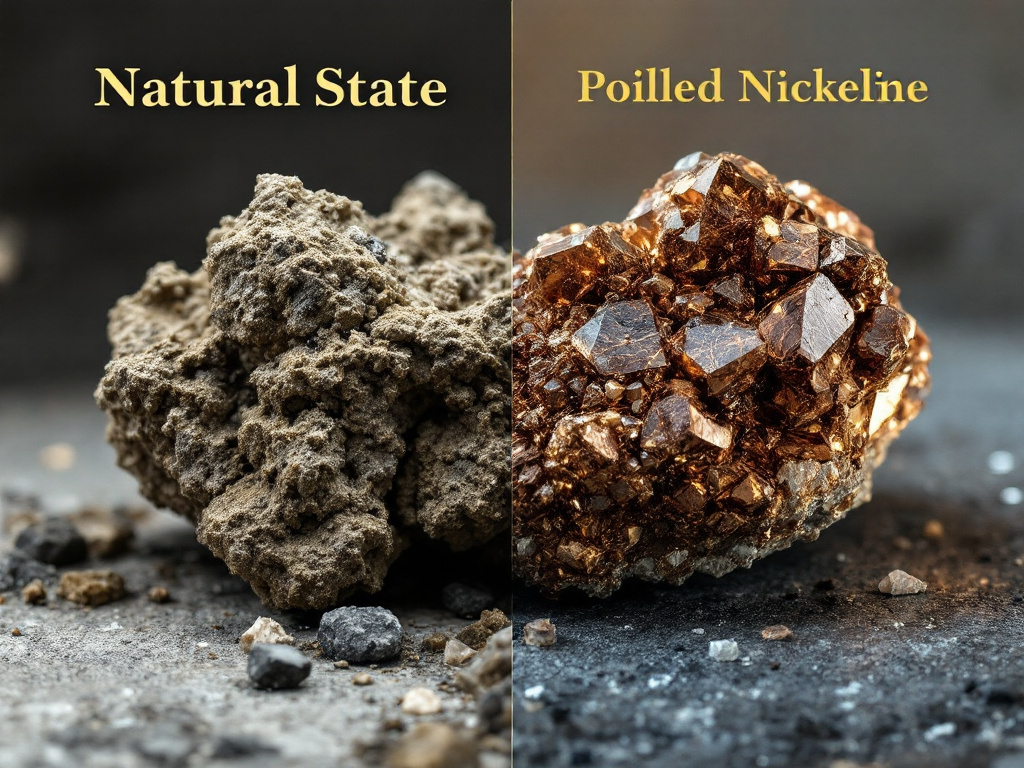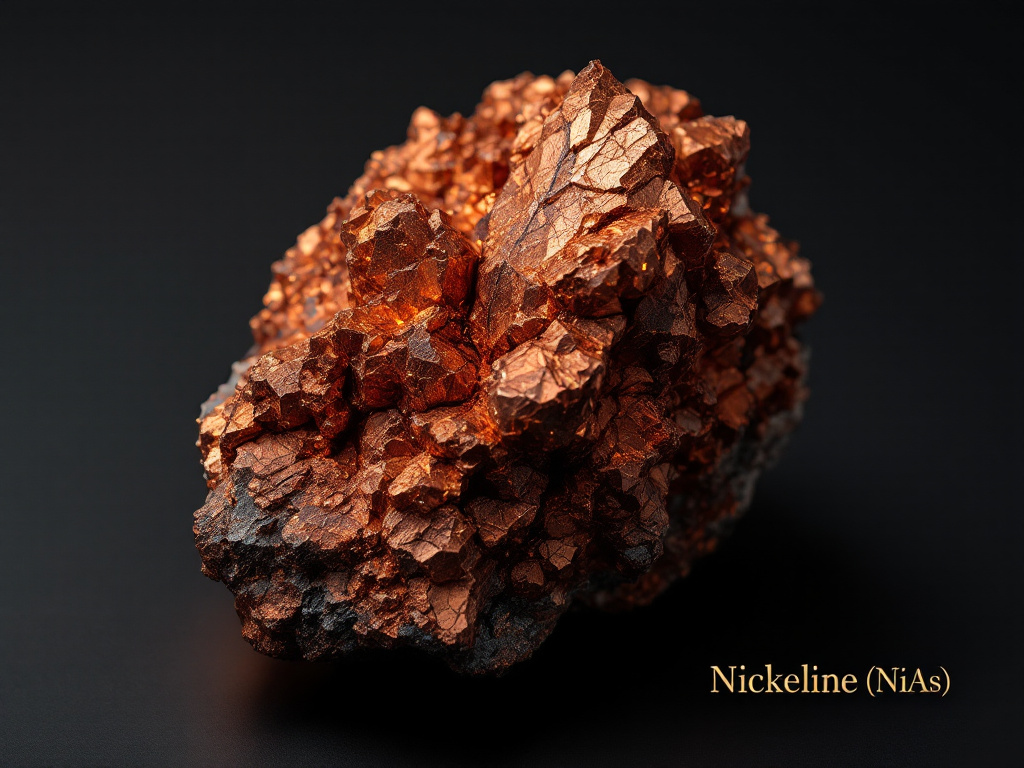Did you know a mineral once mistaken for ‘worthless copper’ became a cornerstone of modern metallurgy? Meet Nickeline, a gemstone shrouded in mystery, arsenic, and industrial power. Here’s how to decode its secrets.
What is Nickeline?

Nickeline Mineral Guide: History, Properties & Identification.
Nickeline (NiAs) is a rare arsenic-nickel mineral first discovered in copper mines, where miners initially dismissed it as useless. Its metallic luster and reddish hue often confused it with copper ore, but modern gemology reveals its true value: 44% nickel content and critical industrial applications.
🔍 Pro Tip: Always test reddish metallic minerals with a nickel-specific tester (Shop Premium Gemstone Tools) to avoid confusion with copper.
The Hidden History of Nickeline
“Nickeline vs. Copper Ore: How to Avoid Costly Mistakes”
In the 18th century, German miners dubbed Nickeline “Kupfernickel” (“Devil’s Copper”) due to its deceptive appearance. Unlike copper, however, Nickeline contains toxic arsenic and yields no usable metal through traditional smelting. Key deposits are found in:
- Argentina’s La Rioja
- Jáchymov, Czech Republic (Bohemia)
- Pribram, Poland
📌 Ethical Note: Modern mining in these regions follows strict safety protocols. When sourcing Nickeline, always verify certifications like those from the International Colored Gemstone Association (ICA).
Nickeline’s Industrial Power: Uses & Applications

Nickeline in Modern Industry: From Metallurgy to Gemology.
Key Properties
| Attribute | Description |
|---|---|
| Composition | Nickel (44%), Arsenic (56%) |
| Color | Reddish-white to pale copper |
| Hardness | 5–5.5 on Mohs scale |
| Toxicity | Contains arsenic—handle with gloves |
Nickeline’s resistance to corrosion makes it vital for:
- Nickel plating (used in aerospace and automotive industries).
- Specialized alloys (e.g., magnets, batteries).
- Enamels and ceramics (via nickel oxide additives).
⚠️ Safety First: Use a fume hood when cutting Nickeline. For safe handling tools, explore GIA-approved equipment.
Ethical Sourcing & Certification
How to Ethically Source Nickeline Gemstones.
Nickeline mining poses environmental risks due to arsenic content. Protect yourself and the planet by:
- Requesting origin certificates (e.g., Gemological Institute of America (GIA)).
- Supporting mines with Fair Trade practices.
- Avoiding uncertified sellers (common in online marketplaces).
📊 Comparison Table: Trusted vs. Risky Sources
| Trusted Source | Red Flags |
|---|---|
| GIA-certified dealers | No transparency on origin |
| ICA-affiliated miners | Prices far below market |
FAQ: Your Nickeline Questions Answered
Q: Is Nickeline toxic?
A: Yes—its arsenic content requires careful handling. Always wear gloves and use certified lab tools.
Q: Can Nickeline be used in jewelry?
A: Rarely. Its toxicity limits ornamental use, but polished specimens are prized by collectors.
Q: What’s the rarest Nickeline deposit?
A: Argentina’s La Rioja region produces highly sought-after specimens with unique greenish aggregates.
Tools & Resources
Top Tools for Nickeline Identification.
- Nickel Testing Kit (Shop Premium Gemstone Tools)
- 10x Loupe for inspecting metallic luster (Amazon)
- GIA Certification Guide (Download Here)
Insider Tips from a GIA-Certified Gemologist
💎 Pro Tip: “Suspect a fake? Rub the mineral on porcelain. True Nickeline leaves a pale brown streak, not copper’s reddish mark.”
Author Bio:
Written by Alex Carter, a GIA-certified gemologist with 12 years of experience in mineralogy and ethical sourcing.

